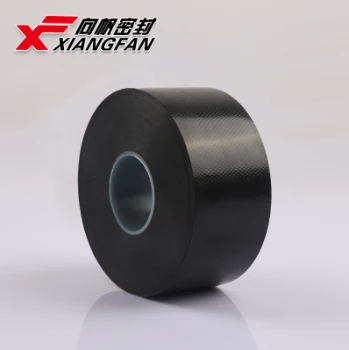Self-Amalgamating Tape A Heat-Resistant Solution for Electrical Insulation
In today’s world, where electrical systems are integral to both industrial and domestic applications, the need for reliable insulation materials is paramount. Among those materials, self-amalgamating tape has emerged as a popular choice, particularly when heat resistance is a critical requirement. This article will delve into the characteristics, applications, and benefits of self-amalgamating tape, especially in high-temperature environments.
What is Self-Amalgamating Tape?
Self-amalgamating tape, also known as self-fusing or silicone tape, is a type of insulating tape composed of a special rubber or silicone material that bonds to itself upon application. Unlike traditional adhesive tapes that rely on sticky glue, self-amalgamating tape creates a waterproof and air-tight seal by merging with adjoining layers of tape. This unique property allows the tape to offer exceptional insulation and protection against various environmental factors.
Heat Resistance
One of the most significant advantages of self-amalgamating tape is its heat resistance. Such tapes can typically withstand temperatures ranging from -60°C to 260°C (-76°F to 500°F), making them suitable for use in both high-temperature and extreme cold environments. This thermal resilience is crucial in applications where electrical components may generate heat or be exposed to high temperatures due to other operating conditions.
Applications
Self-amalgamating tape is versatile and finds use in various industries, including electrical, automotive, aerospace, and plumbing. Some common applications include
1. Electrical Insulation It is widely used for insulating electrical wires and connections, providing a durable barrier against moisture, dust, and heat. This is particularly essential in applications involving high voltage or equipment operating at elevated temperatures.
2. Repairing Hoses and Cables In the automotive and plumbing sectors, self-amalgamating tape can effectively seal leaks in hoses or pipes. Its heat-resistant properties ensure that it remains intact even in high-temperature environments.
self amalgamating tape heat resistant

3. Bundling Stranded Wires In electronic devices, it is often used for bundling and protecting multi-core cables. The tape’s ability to conform to shapes and create a cohesive seal helps maintain the integrity of complex wiring systems.
4. Aerospace Applications Self-amalgamating tape is utilized in aerospace for insulating connections and maintenance of electrical systems where heat fluctuations can occur rapidly. Its lightweight nature and strong insulative properties are particularly beneficial for aircraft components.
Benefits
The use of self-amalgamating tape comes with several benefits
- Ease of Use The application process is simple; there are no adhesives to deal with. Users just need to stretch and wrap the tape around the desired surface. As the tape overlaps, it fuses to itself, creating a strong bond.
- Durability Self-amalgamating tape is resistant to UV rays, moisture, and many chemicals, allowing it to work effectively in various environmental conditions without degrading over time.
- Versatility Its applications range widely, from industrial uses to DIY projects at home, making it a handy tool for both professionals and amateurs.
- Cost-Effectiveness Given its durability and effectiveness, self-amalgamating tape can be a cost-effective solution, reducing the need for frequent repairs or replacements.
Conclusion
Self-amalgamating tape is an invaluable product in the realm of electrical insulation, particularly where heat resistance is concerned. Its unique properties make it suitable for a wide array of applications, ranging from industrial to domestic uses. With its ease of application, durability, and versatility, self-amalgamating tape is indeed a reliable solution for those seeking effective heat-resistant insulation.
-
XIANGFAN Rubber Tape-Ultimate Solutions for All Your Insulation NeedsNewsJun.24,2025
-
XIANGFAN Rubber Tape-Protection for Industrial and Residential ApplicationsNewsJun.24,2025
-
XIANGFAN Rubber Tape: Superior Safety and Sealing for Demanding EnvironmentsNewsJun.24,2025
-
XIANGFAN Rubber Tape: Reliable Solutions for Every Electrical ChallengeNewsJun.24,2025
-
XIANGFAN Electrical & Industrial Tape: Powering Reliability Across IndustriesNewsJun.24,2025
-
XIANGFAN Electrical & Industrial Tape: Excellence in Every ApplicationNewsJun.24,2025
